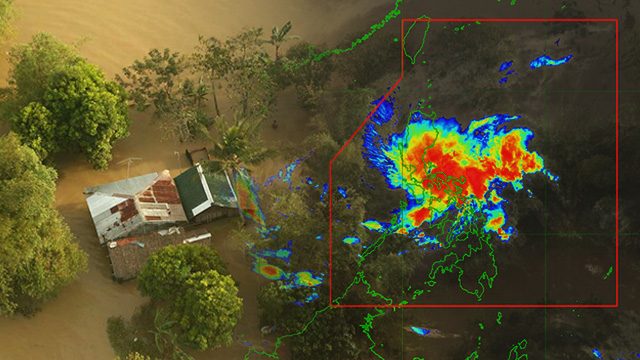SUMMARY
This is AI generated summarization, which may have errors. For context, always refer to the full article.

MANILA, Philippines – The state weather bureau clarified it did not make a mistake in predicting the amount of rainfall from Tropical Depression Usman, the deadliest tropical cyclone to hit the country in 2018.
Usman had entered the Philippine Area of Responsibility on Christmas, December 25. It made landfall in Borongan, Eastern Samar, at 6 am on December 29, then weakened into a low pressure area (LPA).
Usman left at least 155 dead, 27 missing, and 105 injured in Bicol, Mimaropa, and Eastern Visayas, according to the January 13 report of the National Disaster Risk Reduction and Management Council (NDRRMC).
Hourly vs daily volume of rainfall
Disaster scientist Mahar Lagmay had claimed that the “wrong” forecast of the Philippine Atmospheric, Geophysical, and Astronomical Services Administration (PAGASA) led to the high death toll, particularly in Bicol.
But PAGASA clarified in a statement on Wednesday, January 16, that Lagmay used the “hourly rainfall intensity” classification when he claimed that intense to torrential rain actually hit Bicol, not moderate to heavy rain as forecast by the state weather bureau. Lagmay had cited these definitions:
- moderate – 2.5 to 7.5 millimeters (mm) per hour
- heavy – 7.5 to 15 mm per hour
- intense – 15 to 30 mm per hour
- torrential – more than 30 mm per hour
However, PAGASA said that it uses the “24-hour (daily) accumulated rainfall” classification when it issues bulletins on tropical cyclones. Moderate to heavy rain was forecast for Usman:
- moderate – 60 to 180 mm per day
- heavy – more than 180 mm per day
“Verification of the observed 24-hour accumulated rainfall values for Bicol area showed that the amount falls within the moderate to heavy categories,” PAGASA said. (READ: How much rain did Tropical Depression Usman bring?)
Why downgrade Usman to an LPA?
PAGASA also reacted to criticism coming from local officials that people were “confused” and became complacent because Usman was downgraded to an LPA after hitting land.
PAGASA said meteorological data at that time showed that Usman had indeed weakened into an LPA, and subsequently, Signal No. 1 was lifted.
“However, this does not imply that weather will rapidly improve and the threat of flooding and landslides are immediately reduced,” PAGASA explained on Wednesday.
“PAGASA stated that moderate to heavy rains will continue over Bicol Region in the next 24 hours. This was reiterated in the Weather Advisory for LPA and Tail-end of Cold Front issued at 11 am of the same day,” it added.
As for the tropical cyclone warning signal system, PAGASA reminded the public that Signal Nos. 1 to 5 are issued based on expected winds in an area. They have “no relation” to rainfall.
“However, PAGASA has always emphasized the threat of heavy rains and other hydrometeorological hazards and its impacts associated with each [tropical cyclone],” the state weather bureau said.
Officials ‘informed’
Aside from releasing regular bulletins and warnings on its website and social media pages, PAGASA also said the NDRRMC and local disaster risk reduction and management officials had been informed. (READ: Lorenzana assures public: Gov’t ready for Usman)
“PAGASA had ensured that warnings and pertinent information were disseminated to disaster managers at the national and local levels,” the state weather bureau said, adding that it warned them to brace for “prolonged heavy rainfall…which could trigger flooding and landslides.”
According to PAGASA, the Mines and Geosciences Bureau also gave a list of areas prone to floods and landslides during the pre-disaster risk assessment meeting or PDRA.
“It was also emphasized that rainfall over the past week made the soil very saturated, and even light to moderate rains could still trigger landslides in mountainous areas,” added PAGASA.
Usman was the Philippines’ 21st and final tropical cyclone for 2018. The country gets an average of 20 tropical cyclones per year. – Rappler.com
Add a comment
How does this make you feel?
There are no comments yet. Add your comment to start the conversation.